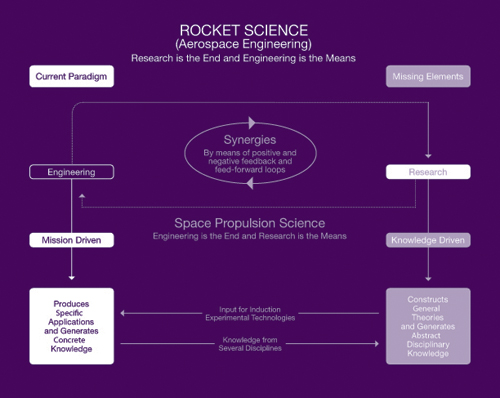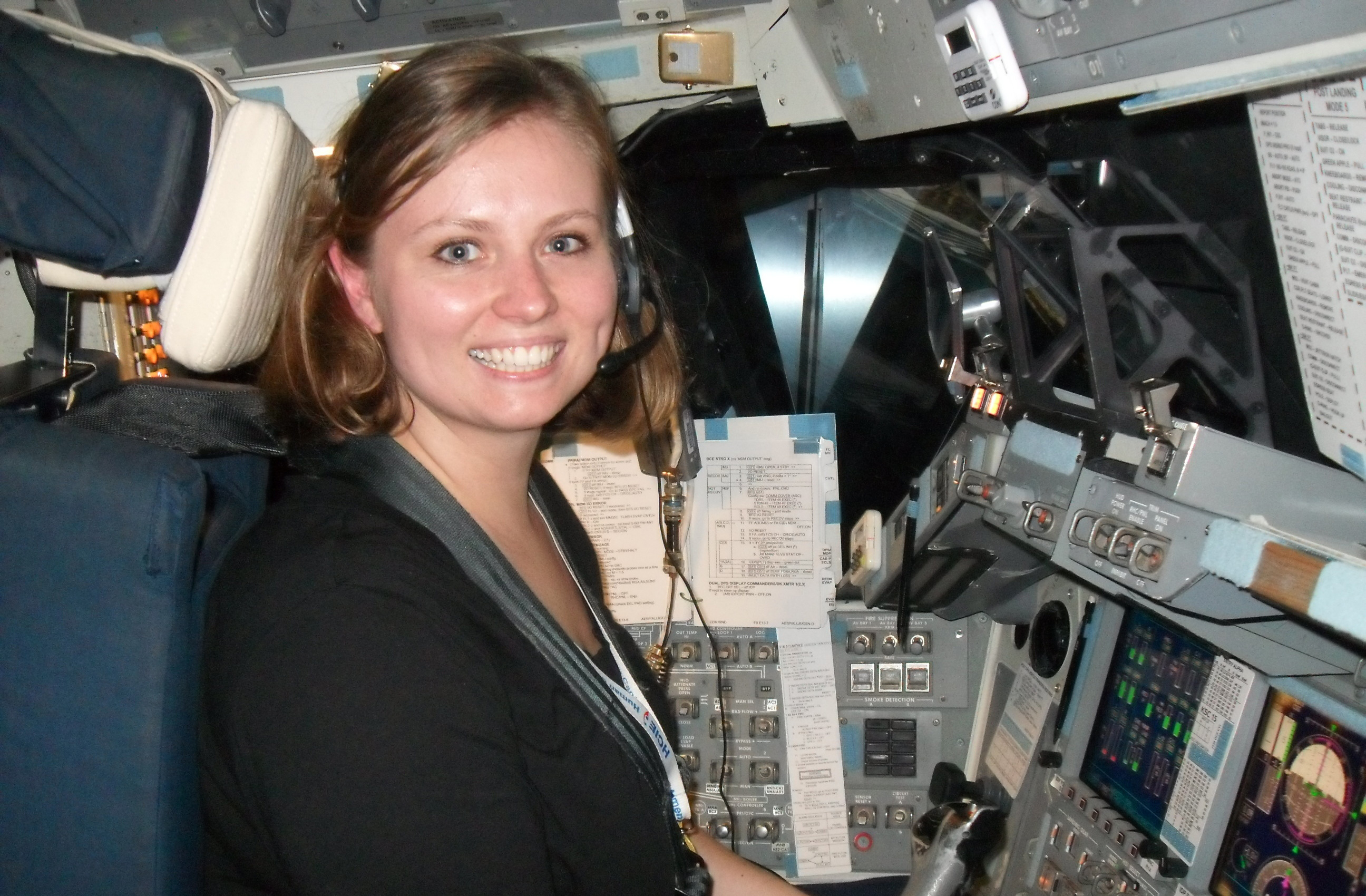By Glen A. Robertson
One hundred years from now there will exist technologies that today’s science fiction writers have yet to dream of. Many of these technologies will come from theories, ideas, and concepts that are laughable today.
Modern rocketry (since 1900) came about through the innovation of people seeking new knowledge. These individuals were more scientist—creating theories of propulsion and testing hypotheses—than engineer. As rocketry moved into the space arena, this discipline of building launch vehicles became known as rocket science. But is rocket science really science?
Science refers to the disciplines and professions that acquire knowledge based on scientific methods, including the development of theories, the derivation of mathematical formulations, or the research of these theories and derivations, which provides an organized body of knowledge containing the natural laws and physical resources gained through such research.
In the early days of rocketry, all we had to go on was science. Rockets didn’t exist, and the kinks of mechanical flight were still being worked out. There was no common idea of what a rocket should or could be. The field was open for interpretation and experimentation. As a result, the forms of early rockets varied widely. Some worked better than others, but as soon as one worked even a bit, its function would be tinkered with and refined, or changed outright. It entered an engineering stage.
Engineering refers to the disciplines and professions that apply scientific knowledge in order to design and implement materials, structures, machines, devices, systems, and processes that realize a desired objective and meet specified criteria (such as missions). As the physics of propulsion became more common knowledge and rocketry moved into formal long-range weaponry, government entities needed engineers to design and build rockets that could withstand the rigorous environment in which these weapons were placed.
What we needed was reliability, not creativity. The scientific portion of rocket science was slowly edged out of the definition and practice. Rocket science became a discipline of technological refinement and not one of scientific innovation. We developed a stronger mind-set to build things than to discover and advance our knowledge.
The fundamental problem of space exploration today is that spacecraft-propulsion technologies drive everything else that can be done in space. Given the current engineering mind-set, today’s “rocket scientists” are encouraged to use what is known, resulting in heritage engineering. This culture forbids a realistic path to the discovery of new propulsion technologies through scientific methods. If future spaceflight is to be radically changed and improved upon, we need a new discipline to provide that path.
What we need is not rocket science, but space-propulsion science.
Space-propulsion science would involve developing new theories, deriving new mathematical formulations, or researching new concepts derived from these theories and derivations. The aim would be to provide scientific knowledge that engineers can use to design future launch and space vehicles. To my knowledge, this discipline—as defined here—is nonexistent in today’s society, even though there are practitioners such as the Tau Zero Foundation and the Defense Advanced Research Projects Agency’s 100-Year Starship Study.
This new discipline would offer a radical, counter-intuitive view that technology advancement can be learned and intentionally carried out by individuals and teams with the proper knowledge base and organizational commitment. Furthermore, space-propulsion science would encourage breakthrough performances that could make an individual or organization extraordinary, rare, and gifted.
So why aren’t we pursuing this, and why does a profession that uses brute force to overcome gravity not try to understand it?
To invent and develop genuinely innovative propulsion systems, we need to bring in scientists studying the theories, ideas, and concepts that today may seem foolish or impractical.
The answer is simple: most new ideas, concepts, and theories lack a fundamental engineering value that could be applied today and be justifiable up the current management chain. For rocket science and space-propulsion science to develop future spacecraft-propulsion systems, there needs to be a means to unite them. Such a union can be made using the similarity between design and research, as engineering is, in effect, a form of design.
Engineering and research are characterized by iterative cycles of generating ideas and testing them against reality. Scientists and engineers both use generative and evaluative thinking, but scientists stress the evaluative thinking (by logic, deduction, explicit definitions, verbal notations, etc.) while engineers focus on the generative thinking—which is usually associative, analogical, and inductive—using loose definitions supported by visual representations such as sketching, diagramming, and prototyping. A visual schematic of the most fundamental relationships between engineering and research as it applies to space propulsion is shown below, with the current paradigm shown in white and the missing elements in light purple.

From a management viewpoint, this figure implies that organizations that pursue only rocket science—especially the aerospace-engineering components—need to develop smaller, but mirroring, space-propulsion-science components. Such development should include the following elements to help ensure a successful marriage between the discplines:
- Provide funding sources outside engineering missions
- Separate line management, beginning at the directorate level, to ensure survivability
- Engage upper-management support that is sustainable through the hard times as well as the good
- Ensure mutual respect and collaboration are maintained across the engineering and research components, and allow a better future for both
This is not to say the aerospace community is not doing a great job or that engineers are not knowledge-driven, but integrating definable knowledge-driven entities such as space-propulsion science within an aerospace organization would provide a faster path to future propulsion technologies.
In other words, for NASA to stand out as a leader in exploring the dreams of tomorrow, the agency must support and investigate scientific-technology innovations in propulsion (and other areas). To invent and develop genuinely innovative propulsion systems, we need to bring in scientists studying the theories, ideas, and concepts that today may seem foolish or impractical. Discover one, allow engineering to develop it, then continue pursuing the next innovation.
The NASA Office of the Chief Technologist has already started down this path. Programs like the NASA Innovative Advanced Concepts may even support space-propulsion science. It is unclear whether their ideas will expand across the agency, however, without clearer organizational synergies between space-propulsion scientists and aerospace engineers.
To quote Dennis Bushnell, chief scientist of NASA’s Langley Research Center, “It takes three thousand new ideas to find one good one.” We must be able to investigate ideas before they can be used. We’ll have new technologies when engineers are able to work on the new concepts scientists provide and turn those concepts into reality.
Note: This is an excerpt from Glen A. Robertson’s “The Death of Rocket Science in the 21st Century,” published in Physics Procedia in late summer 2011.
About the Author
 |
Glen A. Robertson has been an aerospace engineer at Marshall Space Flight Center since 1987. He is also currently president of the Institute for Advanced Studies in the Space, Propulsion, and Energy Sciences; technical, editorial, and organizing chair for the Space, Propulsion, and Energy Sciences International Forum; and chair for the symposium on New Frontiers on Space Propulsion Sciences. |









